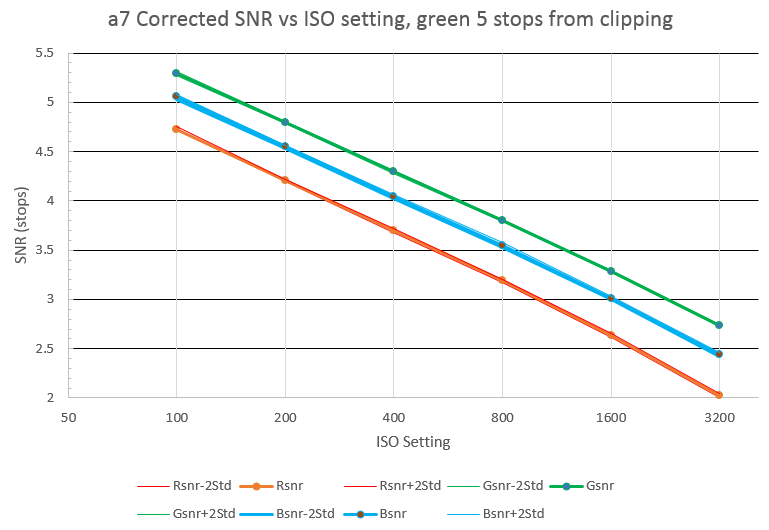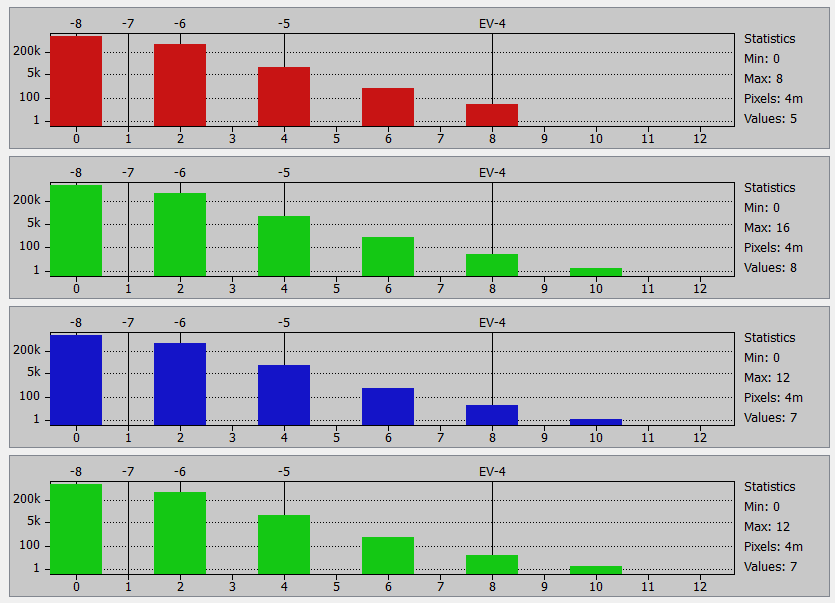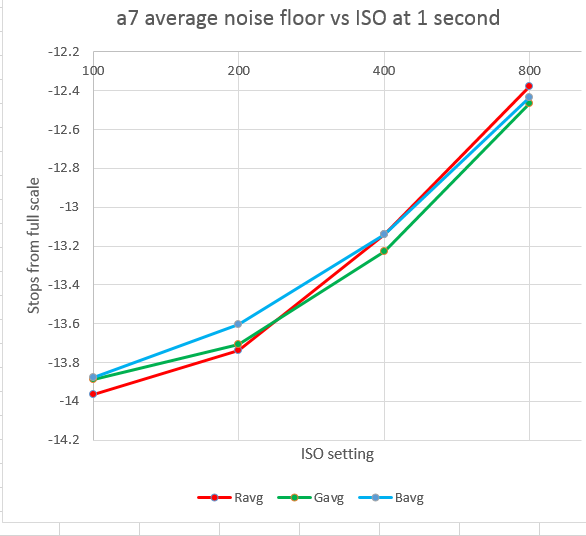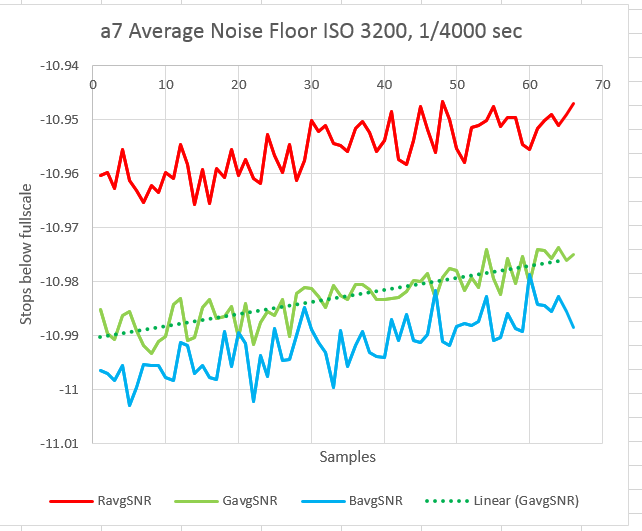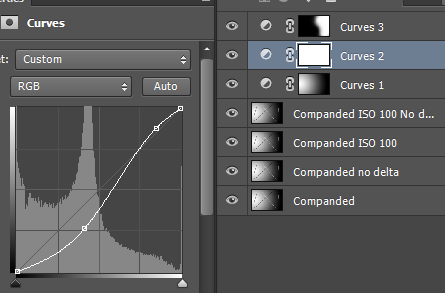With the noise floor and self-heating testing out of the way, we’re ready to tackle the question, “Is the a7 ISOless?” If that question makes no sense to you, hang in there. Explanations follow. If you’ve read this or a similar explanation before, skip to the graphs. Let’s talk a bit about how your camera… [Read More]
Sony a7 noise floor in continuous mode
All of the histograms in the preceding post were made with the drive mode in single shot. When you put it in continuous, you get something different: ISO 100: ISO 200: ISO 400: In each case, only every fourth bucket has data. The pattern is the same at other shutter speeds and ISOs. In single… [Read More]
Sony a7 noise floor
Here’s the average value of the standard deviation of noise floor in the central 90% of the image vs ISO at 1/30th second: If the amplifiers and the analog to digital converters in the a7 were perfect, and all the read noise came from the sensor array itself, then the read noise would double every… [Read More]
Testing the Sony a7, part 1
Well, it’s not really part 1, since I did some shutter shock testing earlier. But now I know that the camera’s vibration is no problem, I’ll give it my regular testing regime. [Added later: If you’re interested in the a7 noise floor in single shot mode, look here. If you care that the a7 becomes… [Read More]
Can you see the Sony raw compression artifacts?
In the previous few days’ posts, I’ve established that: The Sony raw compression algorithm generates artifacts that can be made visible by subtracting an uncompressed image chosen to stress the algorithm from one that has been compressed and decompressed and subjecting the result to amplification by a factor of 20 or 30. If the delta… [Read More]
- « Previous Page
- 1
- …
- 271
- 272
- 273
- 274
- 275
- …
- 384
- Next Page »
